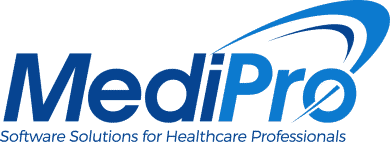As coding changes and regulation compliance issues continue to escalate, medical offices are searching for ways to handle the increasing demands. As physicians and office staff attempt to juggle the avalanche of requirements, patient-physician engagement can suffer. When your staff is too busy doing paperwork to properly greet patients, or when physicians become so overwhelmed that they have to rush through appointments, quality of care declines.
According to Verilogue’s collection of 70,000 patient-physician conversations, the average physician spends 10 minutes and 10 seconds with each patient. That’s not a whole lot of time, so you want to make every minute count. The following are three ways you can vastly improve your patient engagement – without burning out your staff.
1. Streamline the Check In/Check Out Process
Unfortunately, the average patient has to wait in the reception area for over double the length of time that he or she will get to interact with the medical practitioner. According to Vitals.com, the average waiting room time in the year 2012 was 21 minutes. That doesn’t include the time a patient has to spend once admitted to an examination room.
Dissatisfaction with wait time has grown recently, leading to some rather extreme (and borderline absurd) reactions, such as patients billing doctors for excessive time spent waiting. Your office can greatly reduce the wait time and the burden placed on office staff if you invest in an EHR/EMR system that allows you to automate the process. Some systems even enable:
* Patients to sign themselves in, confirm contact information, and note reason for visit electronically.
* Patients to enter updated insurance and pharmacy information to streamline billing, filing of claims and e-prescribing.
* Transmit this information to all necessary parties instantly so the nurse, doctor, and even lab technicians have the information needed for the visit instantaneously.
* Facilitate rapid check out, since all information is filed and billed instantaneously, making checkouts simpler and faster.
By using EHR/EMR, you put the time the patient spends in the waiting room time to use. The patient is busy signing in and updating information, and that information is quickly delivered to all necessary parties. The end result? Shorter wait time for the patient and less burden on your staff. This enables your staff to engage with patients. The busy work is automated, so your staff can give undivided attention to patients, vastly improving the experience the patient has with your office staff.
2. Automate Charting and Directives
Doctors and nurses are faced with short-order cook types of appointments, rushing from patient to patient, all the while struggling to maintain proper records. If you automate charting and delivery of directives through the use of electronic health records, you free them up to actually talk to the patient instead of wading through documentation requirements.
Good EHR/EMR software will make your nurses’ and doctors’ jobs easier by:
* Accommodating their style of communication through the use of a stylus, keyboard or dictation machine to document visit details. Templates should autofill details of conditions and offer flexible documentation options.
* Eliminating the need for repetition of documentation.
* Providing instantaneous communication with lab and other personnel about service needs.
* Reducing coding errors and down coding, saving time and an average of $25,000 per year.
Good electronic health records have be proven to save nurses and doctors time that used to be wasted on inefficient software, paper records or antiquated forms of documentation. According to a national study of doctors who have adopted EHR/EMR, the following is true:
* 79% of providers reported that their practice was more efficient thanks to the EHR/EMR.
* 82% reported that e-prescribing saved them time.
* 75% reported that lab results were delivered more quickly thanks to the EHR.
When your doctors and nurses save time, your patients benefit. Practitioners can relax, knowing information is being captured, recorded, documented, filed, billed and delivered safely and securely. That extra time enables doctors and nurses to invest time engaging with the patient instead of worrying about documentation and regulations.
3. Utilize a Simple Yet Comprehensive Patient Portal
Today’s patient expects to be able to engage with your staff from home and even from mobile devices. The best patient portals support 24/7 engagement through the following:
- Communication via secure messaging, through which the patient can ask questions and request prescription refills.
- Self serve access to medical information.
- Electronic reporting of lab results, including screening results such as mammogram screenings.
The latest and greatest patient portals are mobile-enabled and user friendly, facilitating communication with your patients 24/7.
How MediPro, Inc. Can Improve Your Patient Engagement
Have you hesitated to adopt EHR or MP software? Have you installed software or paid for custom software only to discover it isn’t saving you time or money? Talk to our experts to find out what the best electronic health records or medical practice software is best for your company. Schedule a demo or contact us to get personalized information via our contact form. We’ll help you figure out exactly what your practice needs to enhance your patient engagement while keeping your office in compliance with regulations and medical industry standards.
